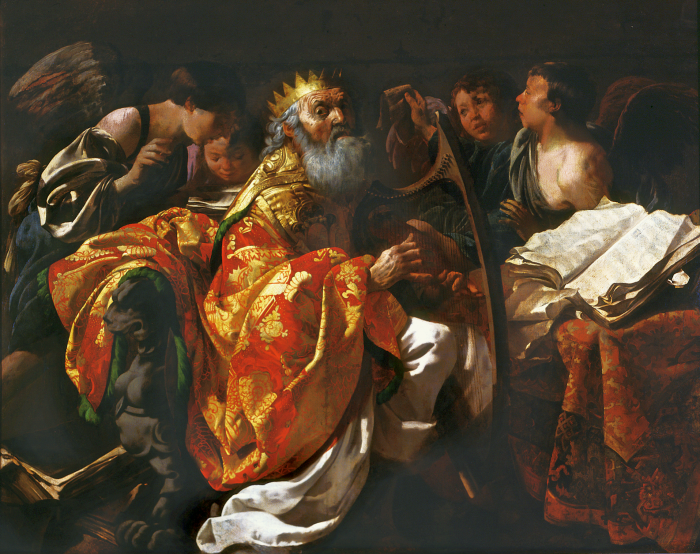
Lesson Objectives
- To see how Luke emphasizes Jesus’ lineage as Son of David in the infancy narrative.
- To see how Jesus appears in public as the Son of David throughout Luke’s Gospel.
- To understand how, at the climax of Luke’s Gospel, Jesus takes his place as heir to the kingdom of David.
IV. Discussion Questions
1. Why was it important to Luke to point out that Jesus Christ was born in Bethlehem?
2. Why were shepherds the first people to hear that the Christ had been born?
3. When the Pharisees rebuke His disciples for picking grain on the Sabbath, Jesus compares himself to David. In what ways does Jesus’ situation resemble David’s?
4. What is significant about the geographical course of Jesus’ ministry in Luke?
5. Whose coronation did Jesus’ triumphal entry into Jerusalem resemble?
6. According to Jesus, what is the difference between the kingdoms of the Gentiles and His own Kingdom?
7. What sign was posted on the cross when Jesus was crucified?
8. What did Jesus explain to His followers in both the post-resurrection appearances recounted in Luke’s Gospel?
For personal reflection:
Are we "foolish and slow of heart to believe all that the prophets spoke" (see Luke 24:25)? What can we learn from Jesus’ own interpretation of the Old Testament Scriptures?
Other Lessons
- Lesson One: A Throne Established Forever
- To begin to appreciate the significance of God’s covenant with David for understanding the content and meaning of the New Testament.
- To understand the biblical idea of the monarchy and the Old Testament background for the Davidic covenant.
- To understand the basic outlines of the promises made to David and the shape of the Davidic kingdom under both David and Solomon.
- Lesson Two: Looking for the ‘New David’
- To understand the basic outline of Israel’s history in the centuries between the collapse of the Davidic kingdom and the beginning of the New Testament era.
- To appreciate how the collapse and disappearance of the Davidic Kingdom shaped Israel’s hopes and beliefs in the five centuries before Christ.
- To understand how God’s covenant promises were interpreted by Israel’s prophets and how those prophecies were understood in the last centuries before Christ.
- Lesson Three: The Son of David in Matthew’s Gospel
- To understand the symbolism Matthew uses to convey the truth that Jesus Christ is the perfect Son of David.
- To see how the baptism of Jesus corresponds to the anointing of the Davidic kings.
- To understand how Matthew sees Jesus’ kingdom as the fulfillment of the promises in the prophets.
- Lesson Five: The Spread of the Kingdom in Acts
- To understand how Jesus’ parting words to His disciples form a map of the ideal Davidic kingdom.
- To see how the structure of the Acts of the Apostles follows that map.
- To see how Luke paints the nascent Church as the Davidic kingdom perfectly restored.
- Lesson Six: ‘The Key of David’: Church and Kingdom in the New Testament
- To understand the characteristics and identity of the kingdom of God as it is portrayed in the New Testament epistles and the Book of Revelation.
- To see how the Church is identified with the kingdom in the New Testament.
- To understand how the Church, as it is portrayed in the New Testament, bears the characteristics of the Davidic kingdom.

